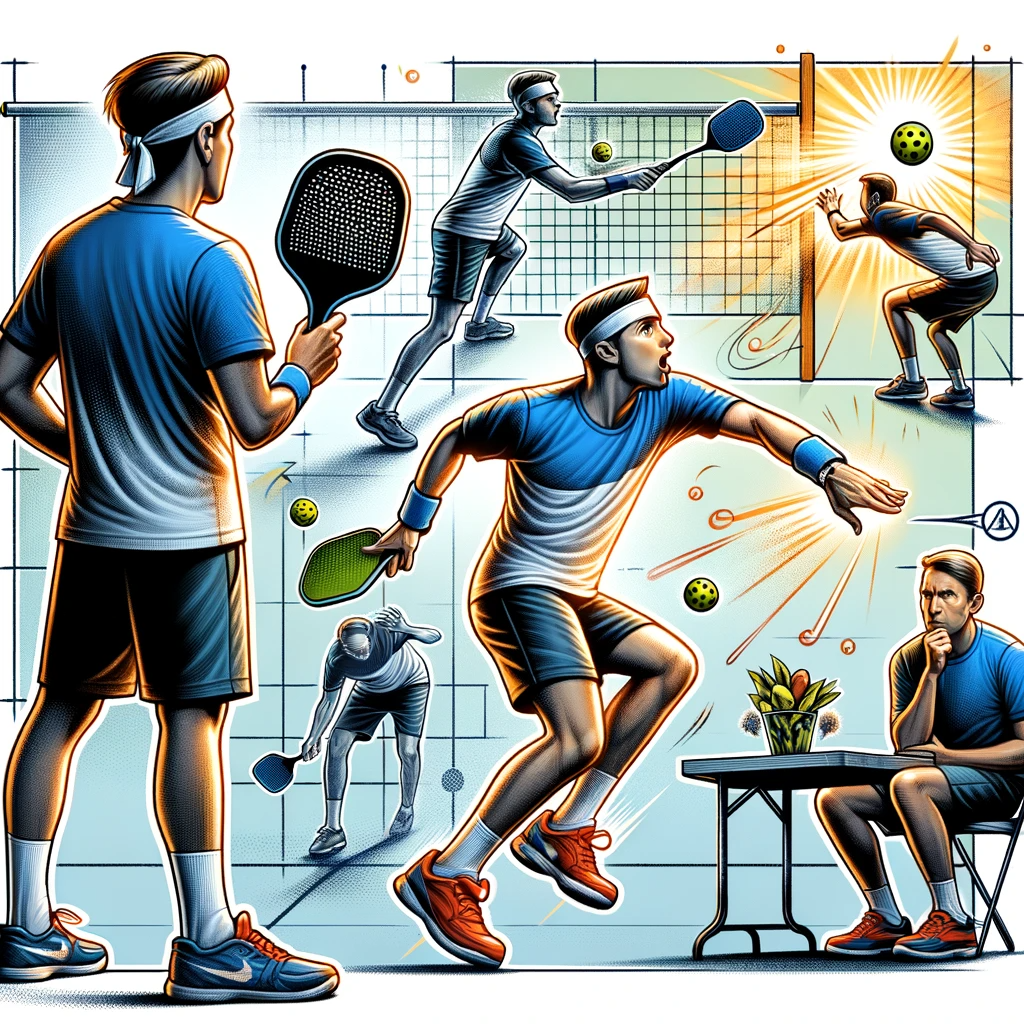Understanding the Kitchen in Pickleball
If you’re new to pickleball, one of the most important rules to understand is the kitchen rule. The kitchen, also known as the non-volley zone, is a seven-foot area on either side of the net that players cannot touch while volleying a ball. This rule is in place to prevent players from getting too close to the net and smashing the ball directly downward, which can be dangerous for the opposing team.
While the kitchen rule may seem straightforward, there are a few exceptions and nuances to be aware of. For example, if you hit the ball while standing outside of the kitchen and then step into the kitchen before the ball bounces, it is considered a fault. Additionally, if a ball is hit into the kitchen, you are allowed to step into the kitchen to retrieve it as long as you do not touch the ball until it has bounced outside of the kitchen. Understanding these details can help you avoid making costly mistakes during a game of pickleball.
The Non-Volley Zone: AKA “The Kitchen”
Picture this: a rectangle of action and strategy, spanning 7 feet by 20 feet on either side of the net. This is the non-volley zone, endearingly referred to as the kitchen. Why is it important? Well, this zone is pickleball’s ‘no-fly zone’ for volleys, keeping players from getting too cozy with the net and making it tougher for opponents to respond. It’s about fair play and keeping the competition lively!
Kitchen Line and the Lay of the Land
Envision a line, a mere 2 feet from the net, marking the edge of this strategic zone. This is your kitchen line, a boundary that separates ambition from overreach. When serving, players must be behind the baseline, aiming diagonally into the opponent’s service court. This court lies between the baseline and the kitchen, across the net. And the entire playing field? It’s a 20 by 44 feet rectangle of pure pickleball potential, including the kitchen area.
Why This Matters
Understanding the kitchen in pickleball isn’t just about following the rules; it’s about embracing the spirit of the game. It’s about fair competition, strategy, and keeping the play engaging for everyone involved. By knowing these rules, you’re not just playing the game; you’re playing it right.
And that’s the scoop on pickleball’s kitchen rule. Remember, it’s all about enjoying the game while respecting its boundaries. So grab your paddle, step onto the court, and serve up some fun – just mind the kitchen!
Basic Kitchen Rules in Pickleball
In pickleball, grasping the basic kitchen rules is vital for both honing your skills and steering clear of common faults. The kitchen, a friendly term for the non-volley zone, is a crucial part of the court. It spans 7 feet deep and 20 feet wide on each side of the net, stretching from one sideline to the other. This area, marked clearly with a line, is designed to prevent players from executing volleys while being too close to the net.
The Kitchen Rule Explained
In the realm of pickleball, the kitchen rule is quite straightforward. Players must execute all volleys outside this non-volley zone. What does this entail? Simply put, you cannot step into the kitchen, or even graze its boundary line, while volleying the ball. It’s imperative to allow the ball to bounce sufficiently outside the kitchen before stepping in to hit it. This rule levels the playing field, ensuring no player gains an unfair advantage by volleying too close to the net.
Common Kitchen Faults
A frequent misstep among players is stepping into the kitchen during a volley. This fault usually happens when a player enters the kitchen before the ball has bounced outside the non-volley zone. Another typical error is hitting the ball while standing inside the kitchen, often referred to as a kitchen violation. These faults can lead to the loss of a point, so being mindful of them is key to enhancing your gameplay.
Understanding the essence of the non-volley zone rule is essential. It’s there to prevent volleys from being made too close to the net, which could provide an unfair edge. By adhering to these kitchen rules, you’re not just avoiding point losses – you’re also upping your pickleball game.

